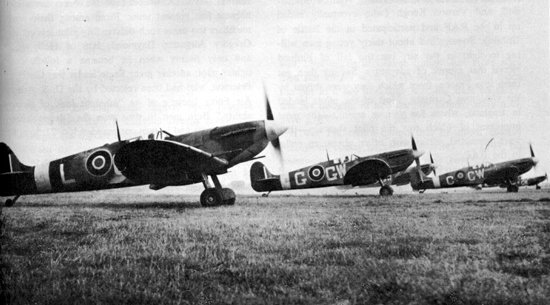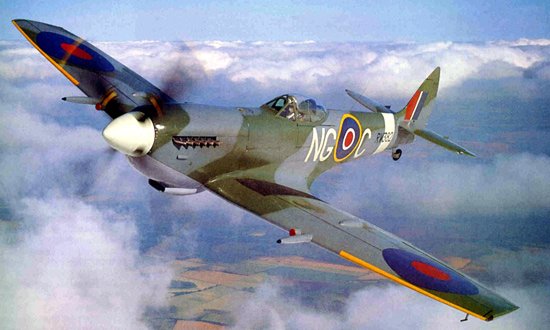Probably the most famous airplane of the Second World War, the Spitfire was the only aircraft that could really rival the German fighters (in particular at the time of the Battle of Britain). The first prototype took off on March 5, 1936, in Eastleigh (Hampshire) and was piloted by Mutt Summers. The British officers were quite impressed. The Spitfire was remarkably easy to handle and its graceful lines helped make it an instant legend.
The war saw several versions of the aircraft; the Merlin engine, in particular, went from developing 1 440 hp to 2 050 hp, a 42% increase. Throughout the war, the British pilots (as well as pilots from France, Poland, Canada, Australia and other countries) flew this airplanes over Britain and Europe battlefields.
The greatest compliment paid to this aircraft was probably made at the height of the Battle of Britain by a German ace, who in a moment of anger and frustration, turned to his Commander in Chief and demanded a squadron of Spitfires!
Over 1,500 Spitfire were produced between 1939 and 1945.
| Type: | Single-seat fighter / interceptor |
| Engine: | 1 Rolls-Royce Merlin 45, dev. 1440 – 2050 hp. |
| Max speed: | 594 km/h (370 mph) @ 6 000 m (13,000 ft.) |
| Ceiling: | 11 000 m (37,000 ft.) |
| Range: | 1 800 km (1,135 mi.) |
| Weight (empty): | 2 260 kg (5,000 lb.) |
| Weight (loaded): | 2 911 kg (6,400 lb.) |
| Wingspan: | 11,23 m (36 ft. 10 in.) |
| Lenght: | 9,12 m (29 ft. 11 in.) |
| Height: | 3,02 m (11 ft. 5 in.) |
| Armament: | Eight 7.7 mm (.303 cal.) Browning machine guns with 350 rounds per gun and up to 227 kg (500 lb.) of bombs. |


